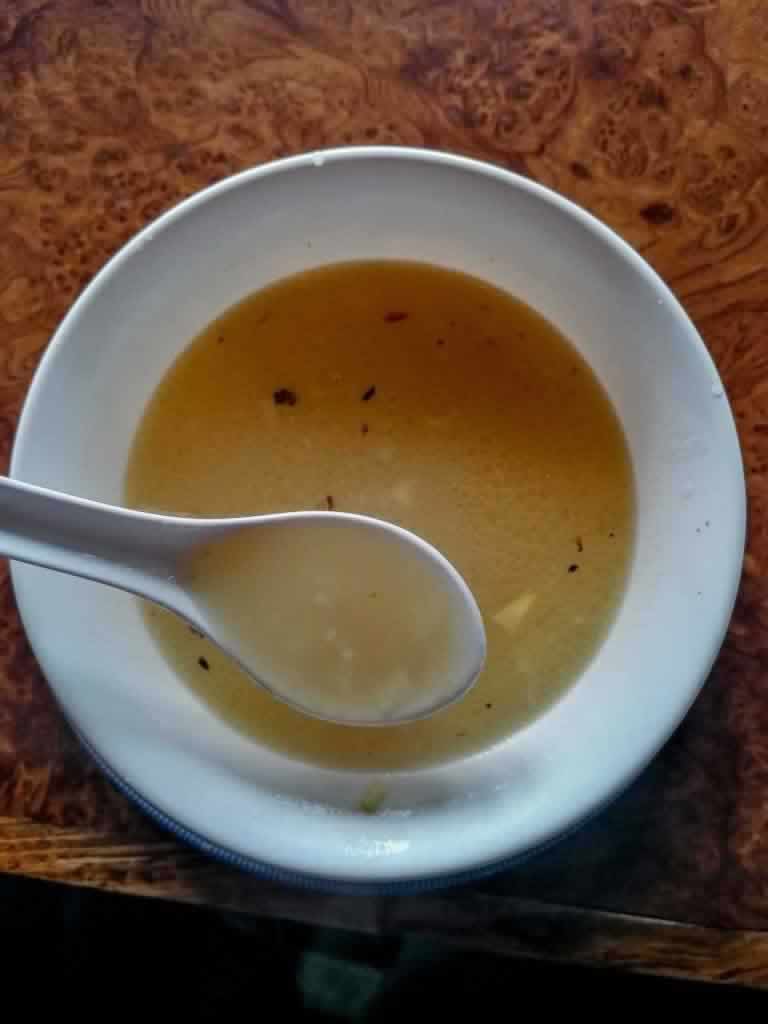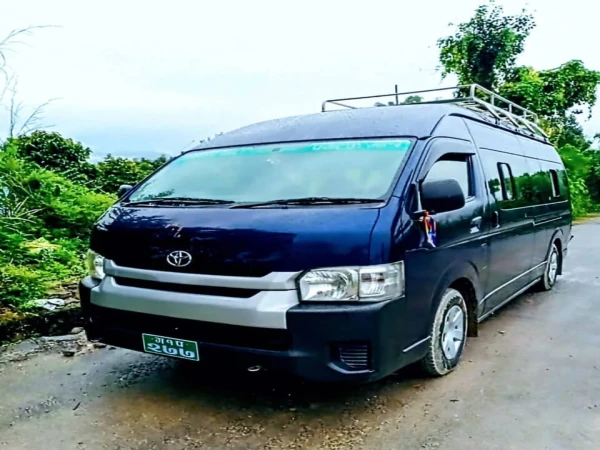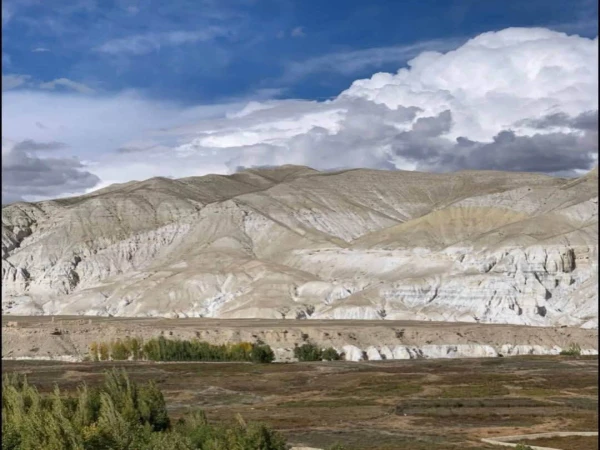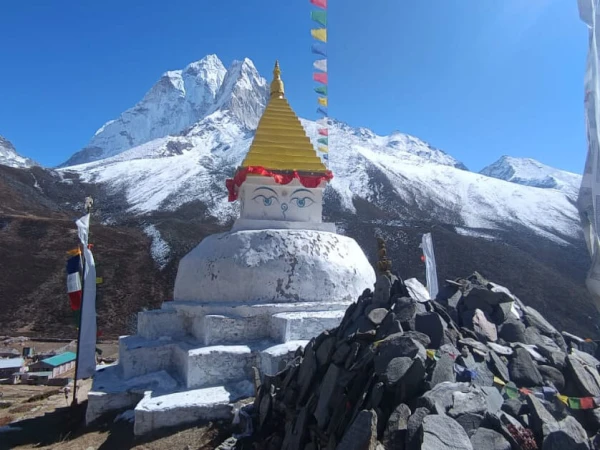Manaslu Circuit Trek is one of the best trekking destination of Nepal. You get to circle the majestic mount Manaslu, the eight highest peak in the world. As you trek through the trail of lush green valleys, ancient monastery, remote himalayan villages and eventually crossing the highest point of the trek Larkya La Pass at 5,160 meters. It’s a serene and beautiful trek but some may face challenges due to Altitude Sickness during Manaslu Circuit Trek.
This blog explores everything you need to know about Altitude Sickness on the Manaslu Circuit Trek—from causes and symptoms to prevention and treatment. Whether you’re a first-time trekker or a seasoned hiker, understanding altitude sickness is key to completing this trek safely.
What is Altitude Sickness?
Altitude Sickness, also known as Acute Mountain Sickness (AMS), is a condition that can occur when your body doesn’t get enough oxygen at high altitudes. As you ascend, the air becomes thinner—meaning there’s less oxygen in every breath. If your body doesn't acclimatize properly, you can develop symptoms that range from mild to life-threatening.
There are three main types of altitude sickness:
- AMS (Acute Mountain Sickness) – Mild to moderate symptoms
- HAPE (High Altitude Pulmonary Edema) – Fluid accumulation in the lungs (life-threatening)
- HACE (High Altitude Cerebral Edema) – Swelling of the brain due to low oxygen (life-threatening)
Why Altitude Sickness is Common on the Manaslu Circuit
The Manaslu Circuit Trek involves significant altitude gain, starting from about 700–900 meters in the lowlands and ascending above 5,100 meters at Larkya La Pass. The rapid change in elevation over days (without proper acclimatization) increases the risk of AMS.
Unlike shorter treks, the Manaslu Circuit’s remote and high-altitude nature means that evacuation options are limited and medical facilities are scarce—making prevention even more crucial.
Common Symptoms of Altitude Sickness
Early recognition of symptoms is essential. Watch out for the following signs, especially above 2,500 meters:
Mild to Moderate Symptoms (AMS):
- Headache (most common and first sign)
- Nausea or vomiting
- Dizziness or light-headedness
- Loss of appetite
- Difficulty sleeping (insomnia)
- Fatigue or weakness
- Shortness of breath with exertion
Severe Symptoms (HAPE or HACE):
- Persistent dry cough
- Chest tightness or congestion
- Breathlessness even at rest
- Confusion or disorientation
- Inability to walk in a straight line
- Visual disturbances
- Blue or gray lips and fingernails (signs of oxygen deprivation)
If you or your trekking partner experiences these severe symptoms, descend immediately and seek help.
How to Prevent Altitude Sickness on the Manaslu Circuit
The best treatment for AMS is prevention. Here’s how to minimize your risk:
1. Acclimatize Gradually
- Avoid ascending more than 500 meters per day once above 2,500m.
- Incorporate rest days at high altitudes (e.g., Samagaon or Samdo) to allow your body to adjust.
- Follow the rule: “Climb high, sleep low.” Take short hikes above your sleeping elevation and return to sleep lower.
2. Stay Hydrated
- Drink at least 3–4 liters of water daily. Dehydration makes symptoms worse.
- Avoid alcohol and excess caffeine as they can contribute to dehydration.
3. Eat Well
- Consume carbohydrate-rich foods to provide energy.
- Avoid heavy, greasy meals which are hard to digest at altitude.
4. Move Slowly
- Take your time while walking—especially when climbing steep sections.
- Overexertion at high altitudes increases the likelihood of AMS.
5. Consider Preventive Medication
- Acetazolamide (Diamox) can be used to aid acclimatization. Consult a doctor before your trek for dosage.
- Natural remedies like garlic soup and ginger tea are traditionally used in Nepalese trekking culture but should not replace medical advice.

Garlic soups found during trek act as medicine and helps prevents altitude sickness.
What to Pack for Altitude Sickness Protection
Bringing the right gear can help you identify and manage symptoms early:
- Pulse oximeter: To monitor oxygen levels in blood
- Acetazolamide (Diamox): Preventive medication for AMS
- First aid kit: With painkillers, anti-nausea meds, etc.
- Thermal gear: Cold weather increases physical stress
- Water purification tablets: To avoid stomach issues that can mimic AMS
What to Do if You Get Altitude Sickness
If you begin to feel symptoms:
- Do not ascend further.
- Rest and drink fluids.
- Take Diamox (if prescribed).
- If symptoms worsen, descend by at least 300–500 meters immediately.
- In severe cases, arrange for emergency evacuation.
Note: There are no motor roads in the upper parts of the Manaslu region. Helicopter evacuation is the only option in emergencies, and travel insurance that covers high-altitude rescue is highly recommended.
Trekking with a Guide for Preventing Altitude Sickness
Due to the Manaslu region being a restricted area, you must trek with a licensed guide and in a group of at least two. Guides are trained to identify AMS early and make quick decisions—potentially saving your life.
At himalayan Partner we have experienced guide who can detect early symptoms of the altitude sickness and act accordingly to keep you safe.
Final Tips for Trekking Manaslu Safely
- Do a pre-trek health check-up, especially if you have heart, lung, or blood pressure conditions.
- Ensure you have comprehensive travel insurance that covers:
- Trekking above 5,000 meters
- Emergency helicopter rescue
- Keep communicating with your guide about how you feel—never hide symptoms.
Altitude sickness is a serious but manageable challenge on the Manaslu Circuit Trek. With knowledge, preparation, and a cautious approach, you can enjoy this spectacular Himalayan adventure safely. The remote beauty of Manaslu is unmatched—and with the right mindset and awareness, your trek will be unforgettable for all the right reasons.
Looking to trek Manaslu Circuit with expert guidance and proper acclimatization?
Plan your trip with Himalayan Partner
FAQ related with Altitude Sickness on Manaslu Circuit Trek
1. What is the highest point on the Manaslu Circuit Trek?
The highest point is Larkya La Pass, which sits at an elevation of 5,160 meters (16,929 feet).
2. At what altitude does altitude sickness typically begin on this trek?
Symptoms can begin above 2,500 meters, but risk increases significantly after 3,000 meters.
3. How can I prevent altitude sickness on the Manaslu Circuit Trek?
Acclimatize properly, ascend gradually, drink lots of fluids, eat well, and avoid alcohol. Medication like Diamox may also help.
4. Can beginners do the Manaslu Circuit Trek?
Yes, but beginners must prepare thoroughly, follow a gradual itinerary, and always trek with a licensed guide due to the region's restricted status.
5. Is emergency evacuation available if I get sick?
Yes, helicopter evacuation is available but expensive—ensure your travel insurance covers high-altitude rescue.
You can book a safe and best Manaslu Regions trek with Himalayan Partners
Book Manaslu Region Trekking





